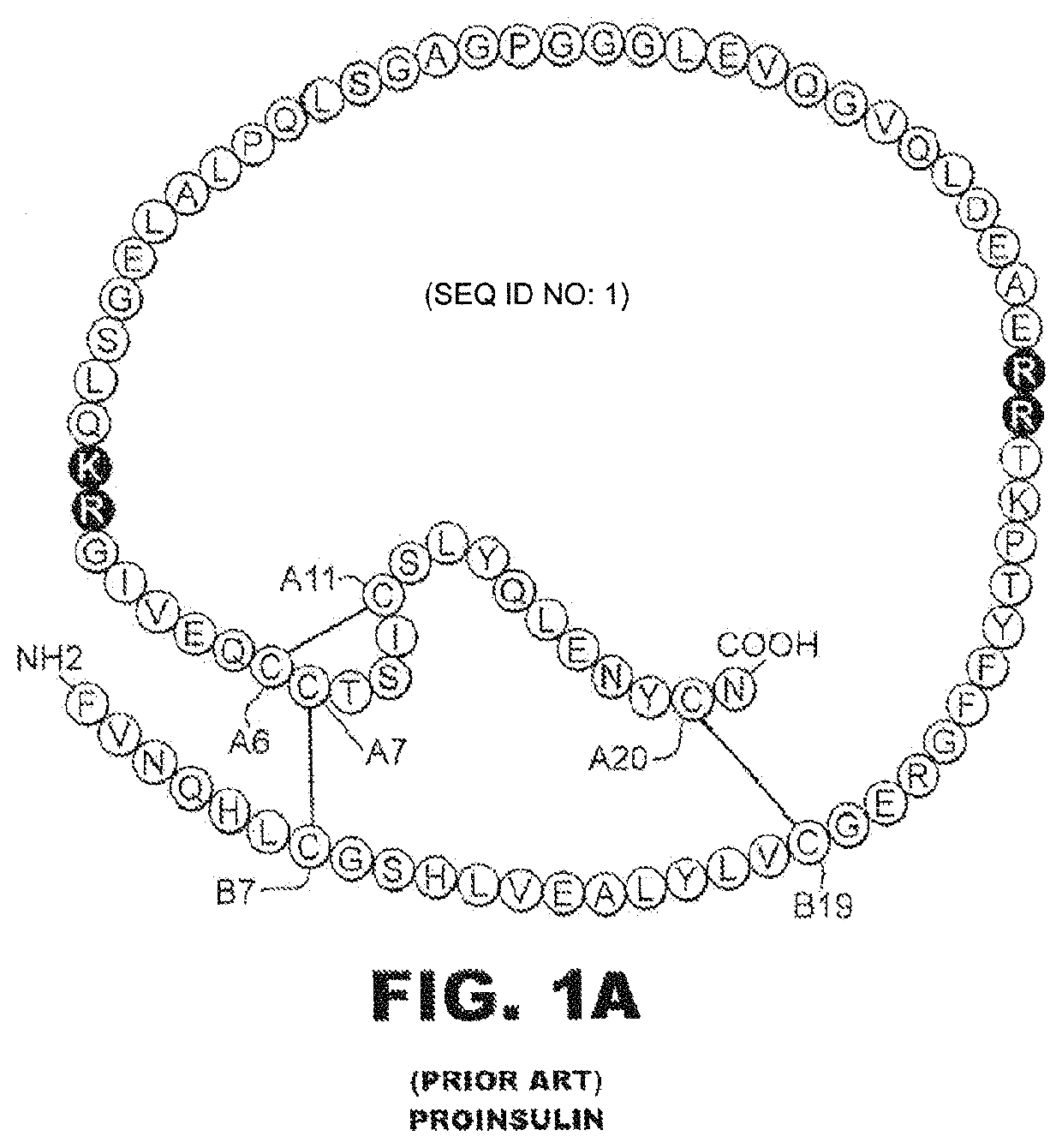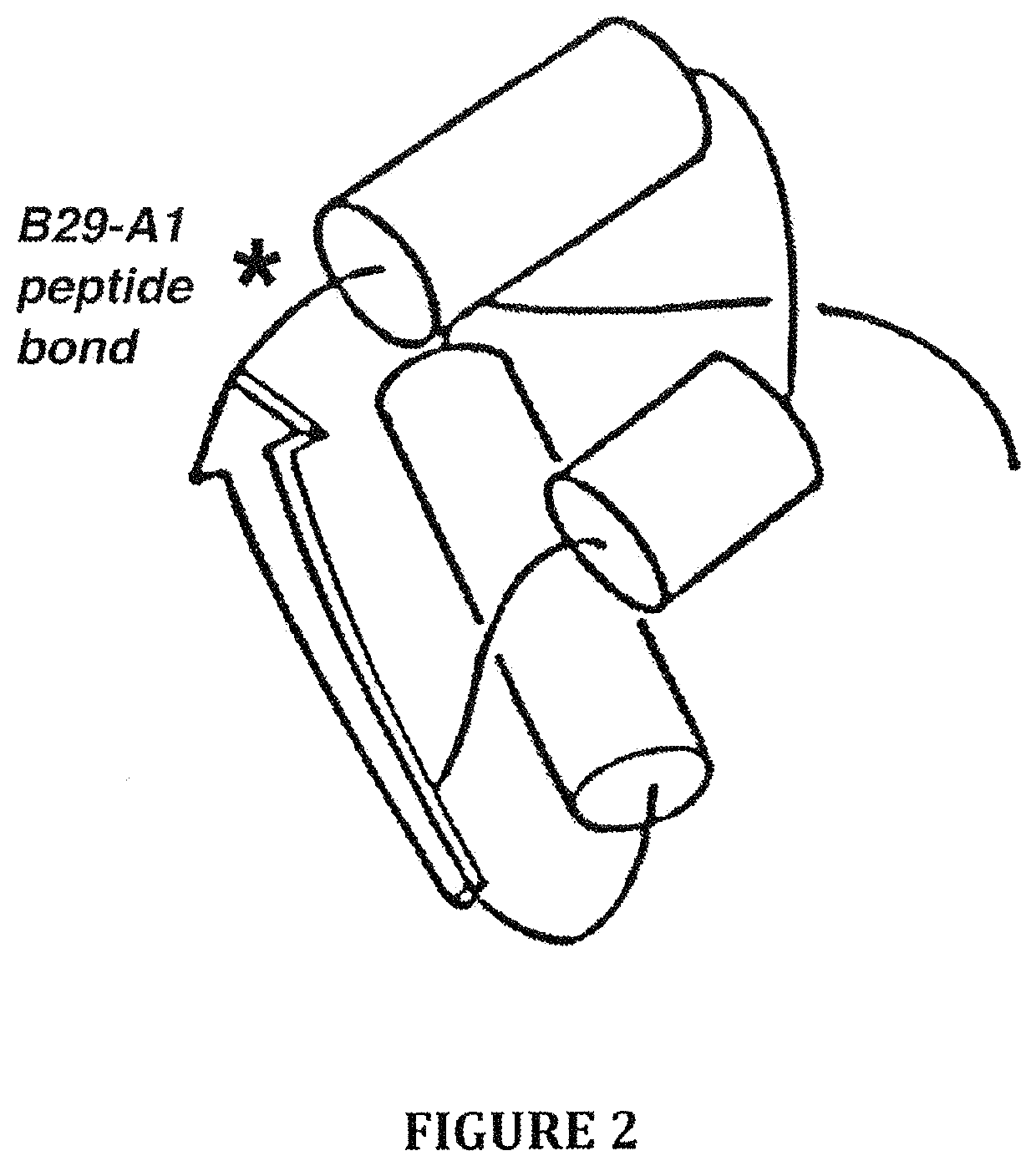Insulin analogues with a glucose-regulated conformational switch
a conformational switch and insulin technology, applied in the field of polypeptide hormone analogues, can solve the problems of increased long-term retinapathy, blindness and renal failure, and significant morbidity, and achieve the effects of facilitating (a) dissociation of insulin hexamer, reducing the risk of microvascular disease, and reducing the risk of vascular diseas
- Summary
- Abstract
- Description
- Claims
- Application Information
AI Technical Summary
Benefits of technology
Problems solved by technology
Method used
Image
Examples
Embodiment Construction
lass="d_n">[0035]The present invention is directed toward an insulin analogue that provides enhanced in vivo glycemic control through glucose-dependent rates of insulin hexamer disassembly in the subcutaneous depot and / or glucose-dependent binding to the insulin receptor in the blood stream and at target tissues. Six novel insulin analogues were prepared as listed in Table 2. Each employs fluoro-phenylboronic acid as the glucose-sensing element. The chemical linkage between the fluoro-PBA moiety and the α-amino group of GlyA1 is illustrated in FIG. 7; the corresponding linkage was employed in analogues with simultaneous fluoro-PBA adduct at the α-amino group of PheB1 (not shown).
[0036]Two analogues contain one such adduct (at the α-amino group of the A chain; Table 2A) and three analogues contain two such adducts (at the α-amino groups of both the A- and B chains; Table 2B). The protocol for derivitization of an insulin fragment by an activare FPA reagent is provided below. These an...
PUM
| Property | Measurement | Unit |
|---|---|---|
| pH | aaaaa | aaaaa |
| molar ratio | aaaaa | aaaaa |
| molar ratio | aaaaa | aaaaa |
Abstract
Description
Claims
Application Information
 Login to View More
Login to View More - R&D
- Intellectual Property
- Life Sciences
- Materials
- Tech Scout
- Unparalleled Data Quality
- Higher Quality Content
- 60% Fewer Hallucinations
Browse by: Latest US Patents, China's latest patents, Technical Efficacy Thesaurus, Application Domain, Technology Topic, Popular Technical Reports.
© 2025 PatSnap. All rights reserved.Legal|Privacy policy|Modern Slavery Act Transparency Statement|Sitemap|About US| Contact US: help@patsnap.com



